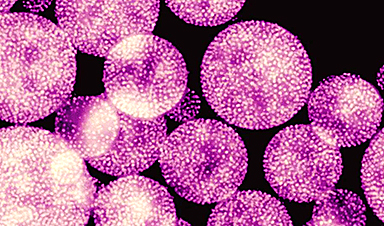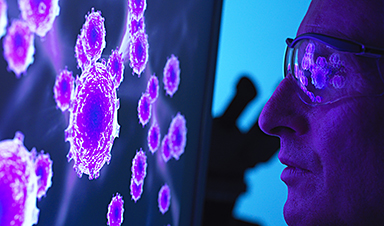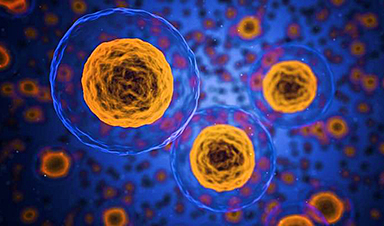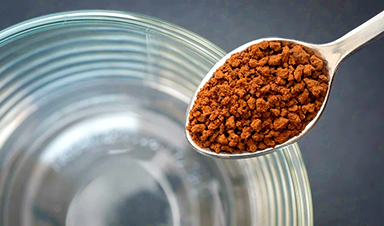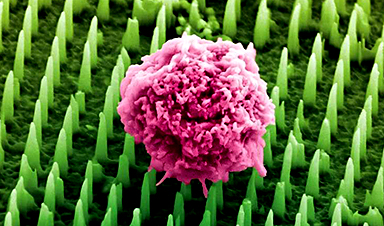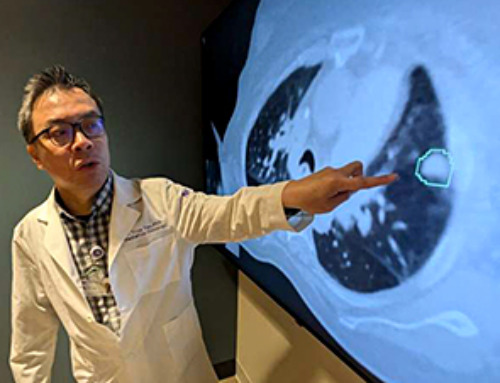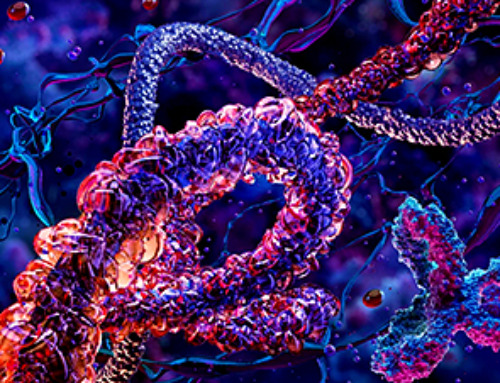| By harnessing the power of composite polymer particles adorned with gold nanoparticles, a group of researchers have delivered a more accurate means of testing for infectious diseases. | |
| Details of their research was published in the journal Langmuir (“Gold Nanoparticle-Decorated Polymer (GNDP) Particles for High-Optical-Density Immunoassay Probes”). | |
| The COVID-19 pandemic reinforced the need for fast and reliable infectious disease testing in large numbers. Most testing done today involves antigen-antibody reactions. Fluorescence, absorptions, or color particle probes are attached to antibodies. When the antibodies stick to the virus, these probes visualize the virus’s presence. In particular, the use of color nanoparticles is renowned for its excellent visuality, along with its simplicity to implement, with little scientific equipment needed to perform lateral flow tests. |
| Gold color nanoparticles (AU-NP), with their high chemical stability and unique plasmon absorption, are widely employed as probes in immunoassay tests. They exhibit extreme versatility, with their colors fluctuating according to their size and shape. Additionally, their surface can be modified by using thiol compounds. | |
| Conventional tests that use AU-NP often have to amplify AU-NP’s optical density, so that scientists can easily measure the strength of the signal produced by the interaction between antibodies and the target substance. | |
| Adding more gold nanoparticles is one means to do this. But because nanoparticles are tiny, it requires a large quantity of them to achieve a strong enough signal for accurate detection. | |
| To overcome this, the researchers proposed a new method called self-organized precipitation (SORP). SORP works by dissolving polymers into organic solvents before adding a liquid that doesn’t dissolve the polymers well, like water. After the original organic solvent is removed by evaporation, polymers assemble together, forming tiny particles. | |
| “Using gold nanoparticle decorated polymers (GDNP) assembled by SORP, we set out to see how effective they would be in detecting the influenza virus, and whether they offered improved sensitivity in detecting antigen-antibody reactions,” states Hiroshi Yabu, co-author of the paper and professor at Tohoku University’s Advanced Institute for Materials Research (AIMR). “And it did. Our method resulted in a higher optical density than original AU-NPs and GNDPs decorated with smaller AU-NPs.” | |
| Yabu and his colleagues’ findings reinforce that GNDP particles have broad utility, extending beyond laboratory settings to real-world diagnostic scenarios. |
| Source: Tohoku University (Note: Content may be edited for style and length) |
News
Drug-Coated Neural Implants Reduce Immune Rejection
Summary: A new study shows that coating neural prosthetic implants with the anti-inflammatory drug dexamethasone helps reduce the body’s immune response and scar tissue formation. This strategy enhances the long-term performance and stability of electrodes [...]
Scientists discover cancer-fighting bacteria that ‘soak up’ forever chemicals in the body
A family of healthy bacteria may help 'soak up' toxic forever chemicals in the body, warding off their cancerous effects. Forever chemicals, also known as PFAS (per- and polyfluoroalkyl substances), are toxic chemicals that [...]
Johns Hopkins Researchers Uncover a New Way To Kill Cancer Cells
A new study reveals that blocking ribosomal RNA production rewires cancer cell behavior and could help treat genetically unstable tumors. Researchers at the Johns Hopkins Kimmel Cancer Center and the Department of Radiation Oncology and Molecular [...]
AI matches doctors in mapping lung tumors for radiation therapy
In radiation therapy, precision can save lives. Oncologists must carefully map the size and location of a tumor before delivering high-dose radiation to destroy cancer cells while sparing healthy tissue. But this process, called [...]
Scientists Finally “See” Key Protein That Controls Inflammation
Researchers used advanced microscopy to uncover important protein structures. For the first time, two important protein structures in the human body are being visualized, thanks in part to cutting-edge technology at the University of [...]
AI tool detects 9 types of dementia from a single brain scan
Mayo Clinic researchers have developed a new artificial intelligence (AI) tool that helps clinicians identify brain activity patterns linked to nine types of dementia, including Alzheimer's disease, using a single, widely available scan—a transformative [...]
Is plastic packaging putting more than just food on your plate?
New research reveals that common food packaging and utensils can shed microscopic plastics into our food, prompting urgent calls for stricter testing and updated regulations to protect public health. Beyond microplastics: The analysis intentionally [...]
Aging Spreads Through the Bloodstream
Summary: New research reveals that aging isn’t just a local cellular process—it can spread throughout the body via the bloodstream. A redox-sensitive protein called ReHMGB1, secreted by senescent cells, was found to trigger aging features [...]
AI and nanomedicine find rare biomarkers for prostrate cancer and atherosclerosis
Imagine a stadium packed with 75,000 fans, all wearing green and white jerseys—except one person in a solid green shirt. Finding that person would be tough. That's how hard it is for scientists to [...]
Are Pesticides Breeding the Next Pandemic? Experts Warn of Fungal Superbugs
Fungicides used in agriculture have been linked to an increase in resistance to antifungal drugs in both humans and animals. Fungal infections are on the rise, and two UC Davis infectious disease experts, Dr. George Thompson [...]
Scientists Crack the 500-Million-Year-Old Code That Controls Your Immune System
A collaborative team from Penn Medicine and Penn Engineering has uncovered the mathematical principles behind a 500-million-year-old protein network that determines whether foreign materials are recognized as friend or foe. How does your body [...]
Team discovers how tiny parts of cells stay organized, new insights for blocking cancer growth
A team of international researchers led by scientists at City of Hope provides the most thorough account yet of an elusive target for cancer treatment. Published in Science Advances, the study suggests a complex signaling [...]
Nanomaterials in Ophthalmology: A Review
Eye diseases are becoming more common. In 2020, over 250 million people had mild vision problems, and 295 million experienced moderate to severe ocular conditions. In response, researchers are turning to nanotechnology and nanomaterials—tools that are transforming [...]
Natural Plant Extract Removes up to 90% of Microplastics From Water
Researchers found that natural polymers derived from okra and fenugreek are highly effective at removing microplastics from water. The same sticky substances that make okra slimy and give fenugreek its gel-like texture could help [...]
Instant coffee may damage your eyes, genetic study finds
A new genetic study shows that just one extra cup of instant coffee a day could significantly increase your risk of developing dry AMD, shedding fresh light on how our daily beverage choices may [...]
Nanoneedle patch offers painless alternative to traditional cancer biopsies
A patch containing tens of millions of microscopic nanoneedles could soon replace traditional biopsies, scientists have found. The patch offers a painless and less invasive alternative for millions of patients worldwide who undergo biopsies [...]
